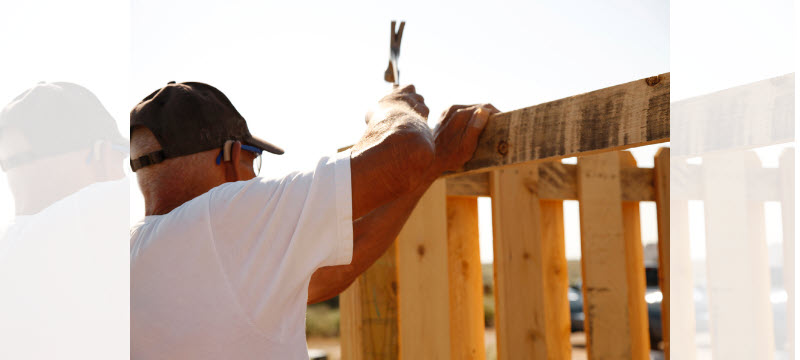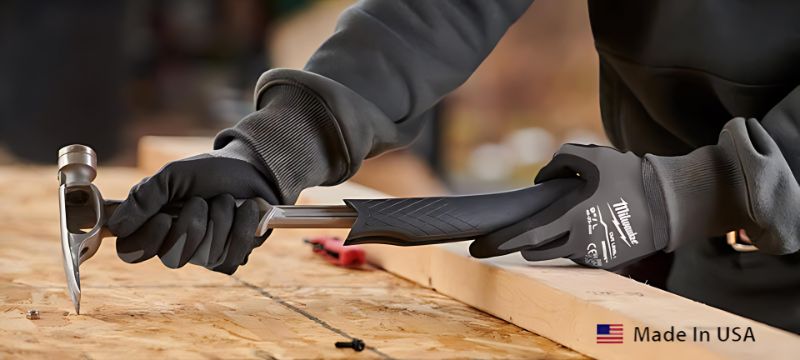A fence not only delineates boundaries but also adds privacy, security and aesthetic appeal to the property. However, building a fence involves more than procuring and putting materials together. Read this comprehensive guide on DIY fence construction for a basic fence, from locating property lines to attaining approval from the city or homeowners’ association (HOA) and selecting the right tools.
Locating Property Lines
Before building a fence, locating the property lines is crucial. Accurately marking the property lines ensures you construct the fence within the property boundary. That way, you avoid potential disputes with neighbors and legal complications in the future. You can refer to property surveys, obtain land records from the local planning department or consult a licensed surveyor.
Getting Approval
Building a fence requires city or HOA approval in many jurisdictions and residential areas. It’s important to check local regulations and HOA guidelines to meet height, material or aesthetic requirements. Some areas may have restrictions on the materials or height of the fence, especially with front yards. So, securing the permits and approvals is essential before proceeding with the construction.
Choosing the Right Tools

Building a fence requires various tools to ensure efficiency and accuracy. Some essential tools for building a fence include:
- Post Hole Digger: A post hole digger is a tool for creating holes for fence posts. Manual or powered versions are available. A powered auger can save time and effort, especially when dealing with hard or rocky soil.
- Level: A spirit level or any level is not just a tool. It’s your key to a structurally sound fence. Keeping the posts and fence panels plumb and straight ensures your fence is aesthetically pleasing and sturdy, giving you confidence in your project.
- Tape Measure: Accurate measurements are vital for a well-built fence. A tape measure ensures precision in post placement and overall alignment.
- Hammer: A hammer is necessary for driving in nails, attaching fence hardware, or adjusting and securing fence components.
- Saw: Depending on the type of fence being constructed, have a saw nearby to cut and shape fence panels and materials.
Digging Holes and Setting Posts

After marking the property lines and obtaining approvals, the next step is to dig the holes and set the posts.
- Marking Post Locations: Using stakes and string, mark the positions of the fence posts along the property line. Depending on your basic fence design idea, space the posts typically 6 to 8 feet apart.
- Digging Holes: With the help of a post hole digger, dig holes at least one-third the height of the fence, with a diameter that accommodates the size of the posts. The depth of the holes will depend on the frost line in your area and the type of soil. Dig holes below the frost line to prevent heaving in areas with frost.
- Setting Posts: Once you’ve dug the holes, place the posts in the holes and use a level to ensure each post is plumb and aligned correctly. Backfill the holes with concrete or gravel and tamp them down to secure the posts.
Installing the Fence Panels
Once the concrete has cured and the posts are firmly in place, it’s time to attach the fence panels.
- Attaching Rails: Depending on the design, attach horizontal rails to the posts to secure the fence panels. Use a level to ensure the rails remain evenly spaced and horizontal.
- Attaching Panels: Secure the fence panels to the rails using screws or nails. Ensure the panels are level and evenly aligned with each other.
- Adding Finishing Touches: To complete the fence installation, install post caps and any decorative elements. Consider staining or painting the fence for added protection and aesthetics.
DIY Fence Construction for Success
Careful planning and attention to detail will help ensure a successful outcome with any construction project. Following this comprehensive guide will help you build a sturdy and beautiful fence. It involves verifying the property line, securing city/HOA approvals and using the right tools. Not only does the fence enhance property boundaries, but it adheres to local regulations and guidelines.




